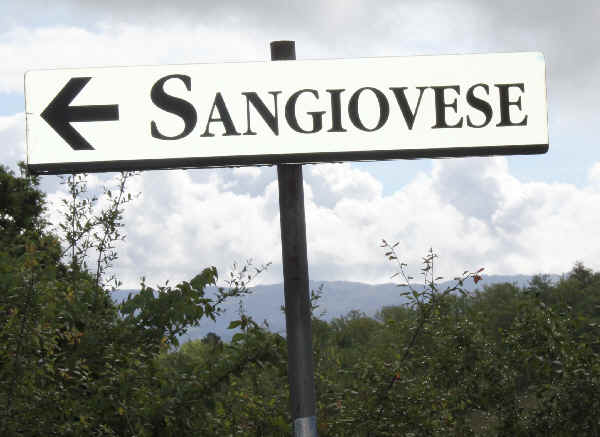We were really happy to see one of our favorite wine writers – Lettie Teague from Wall Street Journal – give some love to one of our favorite food wines that has somehow gone out of style: Chianti (click HERE to see the article). As our readers know, we have a long standing love affair with the Sangiovese grape in all its wonderful forms and expressions (take a look at some of our previous articles: Sangiovese Round One and Round Two). It might be the most food-friendly grape on the plant, as long as you pick up the right bottle.
Ms. Teague mentioned that she couldn’t recall the last time folks talked about Chianti – most likely because of all the bad stuff that had flooded the market. We hope to reverse the trend a bit by first mentioning the wines from Ms. Teague’s article, then by talking about some of our favorite Sangiovese bottles.
The Chianti List
Let’s start with Lettie Teague’s list, since there was quite a few familiar faces, all at reasonable prices:
You won’t go wrong with any of these producers, especially if you can grab some older vintages. But our top bottle from this group is most certainly the Antinori Chianti Classico Riserva. It’s a shade more per bottle, but it is worth it. It strikes the right balance between fruit and acidity, with some darker notes that pairs well with meat as well as pasta or pizza.
Try also the Chianti Classico from Vopaia. It has lots of bright red fruit, nice acidity, and a lingering aftertaste. There was quite of bit of chocolate and espresso notes that were delightful.
Thinking Outside of the Chianti Box
While we enjoy Chianti in all its wonderful expressions, we think that there are other expressions of Sangiovese, both inside and beyond the Tuscany borders, that offer great taste and value.
One of our favorite wines for both quality and value is Vino Nobile di Montepulciano, the oldest Italian wine (traced to the 700’s) produced in the vineyards surrounding the town of Montepulciano. The wine is made from at least 70% Sangiovese (known locally as Prugnolo gentile) and is typically blended with Canaiolo (10%–20%) and small amounts of other local varieties such as Mammolo – although many producers are going back to 100% Sangiovese. The best, and most consistent wine is from Avignonesi. This wine has a strong sweet dark cherry aroma and taste, along with a some herbal, mushroom, and leather tones, with a long, lingering taste. We also like La Calonica Rosso di Montepulciano and La Braccesca Vino Nobile, when we can find it.
How about trying Sangiovese from regions such as Emilia-Romagna, Marches, Liguria, Lazio, Abruzzo, Campagnia, and Molise? Tre Monti from Emilia-Romagna was particularly note-worthy. Their owners pride themselves on producing terrior-driven, small quantity artisanal wine at a good price. This wine is made from 100% Sangiovese, and is aged in stainless steel barrels for twelve months.
We saved the best for last – the wines from the Montalcino region of Tuscany. While still classified as Sangiovese, the Montalcino wines all use the same genetically special version that seems to only grow in this region. We keep a vertical of Brunellos from a number of producer in our cellar – in great years, they rival some of the great wines from around the world. We recently dusted off a 1997 Banfi Brunello that was exquisite – then compared it to the great 2010 vintage, and a more recent 2015. We loved the fruity, ripe, almost exotic style, with lots of red berry (typical cherry, but also lots of interesting raspberry) and floral notes.
While the Brunellos are pricey, and they are at their best with at least 10 years of aging, you can grab a bottle of the Rosso di Montalcino to be consumed early. We have tasted the 2017 versions from Banfi, I Poggione, Fanti, Talenti, and Altesino, and Silvio Nardi – while they were not the “oh wow” Brunellos, they were all delicious wines for a casual meal.






